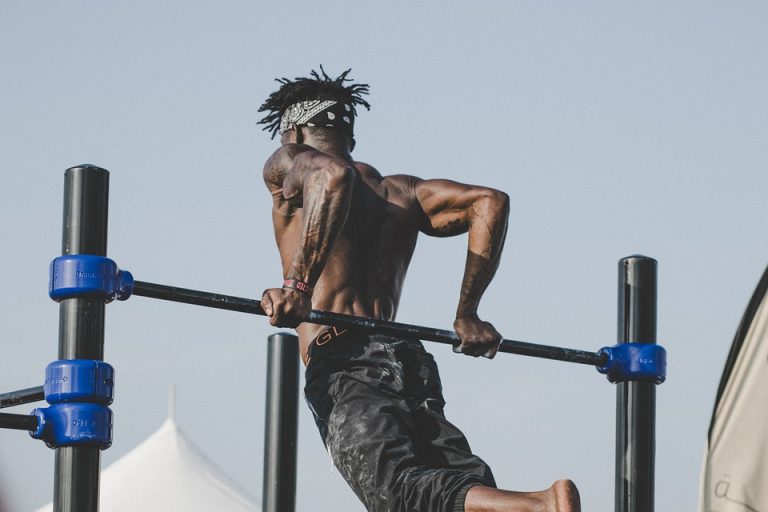Forearms are like calves, and you either have them or you don’t. However, should we just accept this, sit down and not do anything regarding this to improve how they look? Not necessarily. A lot of people complaining about calves or forearms just do not work on them or they think, that their workout is enough. Sometimes those groups of people, because of the type of muscle fibres which predominate in the cross-sectional muscle, are a bit resistant to the regular strength type training. However, using a few smtrategies strictly attacking them at an angle of a long term work, can turn up with great results and change the appearance of muscles.
What are the benefits of forearm training?
People who are working out for the figure care about the visual effect, strong forearms, full of veins, look amazing in combination with large arms. A bodybuilder's silhouette has to be complete and symmetrical, which guarantees getting far. In poses such as front or back bicep, it will show who has issues with forearms and who doesn’t. Small forearms with large and bulking arms will catch every eye and distort the proportions. People training with typically strength related sports care for the grip strength as well as safety. Strong wrists will allow for better bar stabilisation, weight control and the ability to lift more weight. A sure grip is limiting the risk of the barbells falling while lifting barbells laying down, slipping of the bar while deadlifting or better weight stabilisation with a front squat.
I wouldn’t be myself if i didn’t mention the prohealth aspect. Strong forearms will somehow impact and limit the risk of injury, such as the development of inflammatory diseases of a tendon attachment. The repeated patterns of repetitions, especially when it involves professions such as masseur or a tennis player, may impinge on the issue so called golf or tennis elbow, depending on the location of inflammation (flexors dorsal or palmar wrist). Strong forearm muscles will be more durable, which makes the applied force more tolerable and the risk of injury more limited. In addition to that, strong forearms will stabilise the whole limbs more while working out with dumbbells or a barbell held in his hands. Let’s remember, however, that apart from the mass and strength, function also counts. While working out, work on the whole length of the muscle, doing reps on the entire range of motion, which will contribute to the condition of elbow joints or wrists.
What exercises should I implement?
Most importantly, mix them up. Use all the functions of your forearms related to their prehensile hands action or movements of your whole wrist. Therefore, your workout plan should include exercises that will be designed to harness the power of your finger squeeze, hand grip strength, as well as rotational movements, meaning conversion and inversion. Exercises provided below are a representing group, which operates the gripping hand and wrist movement components.
Gripping plates one-handed
A wonderful exercise that will involve finger strength. Doing this consists of choosing 2 discs of the same mass, it would also be good if they had a smooth surface, which will make the exercise a bit more difficult. Combine 2 discs, e.g. 2x5kg for a start, then grip in a way that will have 4 of your fingers on one side and your thumb on the other side of the second ring, squeezing both rings together. This exercise should be done standing with a hanging hand, which will allow gravity to do its work. Hold the weight for as long as you can, until the moment your hand lets go because of the maximal muscle burn. Another variety of this exercise is “plate drop”, however, that’s a bit more dynamic hand work.
Supinated wrist curls with dumbbells
An exercise that will use the power of finger and wrist flexors as well as pronation and supination to activate the muscles of recurring and reversing hand. Doing it is very easy, it just needs a proper place where we can stably rest the whole forearm, sliding the hand over the edge to give us space to work. I personally do this exercise with a bench. Sitting by the bench on the floor, i grab the dumbbell with one hand. Setting the forearm on the base of the bench (the whole forearm rests on the bench, and the wrist is slid over the edge) in a supinated position, I make a eccentric dorsiflexion hand movement, letting the dumbbell bar drop to my fingertips. Coaxial movement is starting to flex the fingers while holding the dumbbell in a closed hand additionally bending the whole wrist, following the movement of the whole hand pronation. Next, we make the supinated movement and let the dumbbell drop to the fingers again. As a fun fact, I will add that the strongest supinated muscle is a bicep, therefore we will not get much out of the forearm exercise, which is why we should focus more on the pronation work.
This Exercise develops excellent grip strength, the strength of the wrist flexor and supports the pronation movement.
Holding the dumbbell in a sitting position while timed
Exercise of the strength type, its goal is to increase the forearm muscle capacity by increasing the time these muscles are working. The exercise is done with dumbbells that we hold in a neutral position by our sides, while sitting. We try to grip the bars hard and hold the dumbbells in our hands for as long as possible. When we feel that our hands are starting to open, we do not let go, we fight to the end, until the dumbbell falls to the ground. An additional difficulty would be adding a few wrist bending movements towards the end, while in the same position. This exercise can be done in the form of drop series.







One Comment